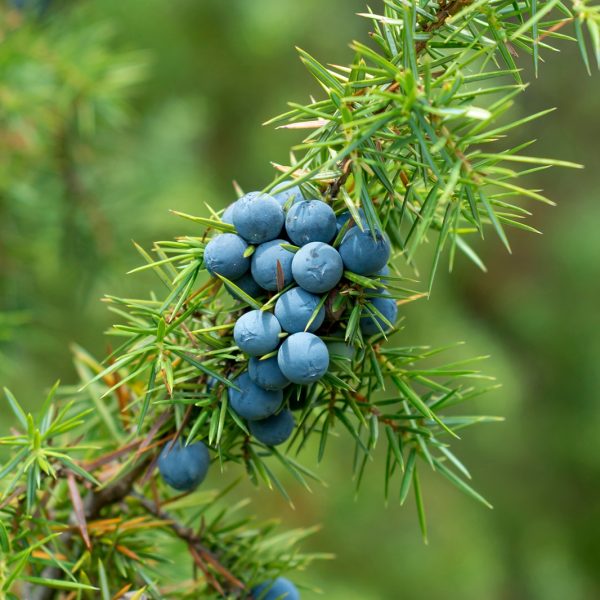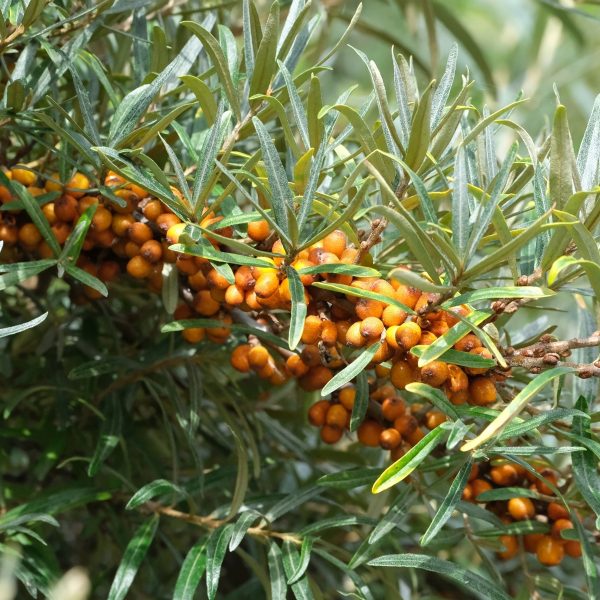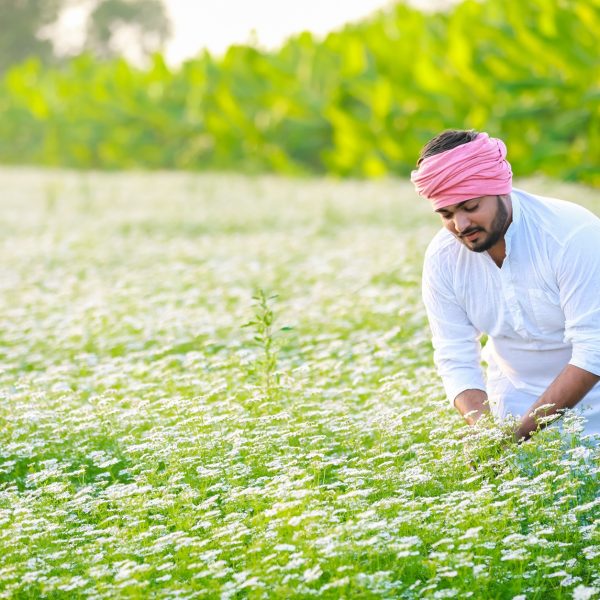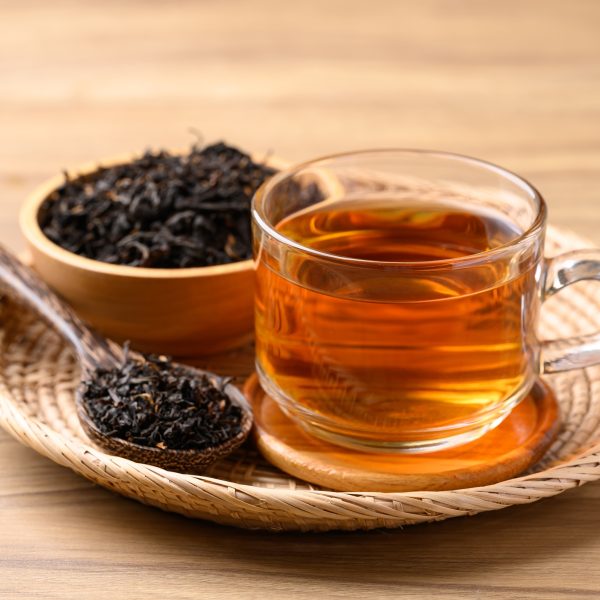-
How does it feel?
The neem tree is a robust and fast-growing plant that can live for up to 200 years. A mature tree can reach heights of 20m and spreads of 10m. The tree will produce yellow fruits after four years of growth and its flowers are white and have a wonderfully sweet scent. Its leaves are narrow and lanceolate in shape, compound and comprise of 15 leaflets arranged in alternate pairs. Neem thrives in well-drained soils all over India at altitudes of up to 1000m. All parts of this plant are highly regarded in medicine.
-
What can I use it for?
Neem contains two chemical constituents known as azadiractin and nimbin which are responsible for the anti-bacterial, anti-fungal and anti-inflammatory activities of the plant. These constituents are fast-acting, potent and bitter enabling it to target and fight infections incredibly efficiently. Neem can alter the environment within which invading pathogens thrive, effectively fighting infection in the digestive system and in the skin. Its strong anti-inflammatory properties ensure a healthy inflammation response providing symptomatic relief to infection.
-
Into the heart of neem
 Neem is a primary herb for dealing with all manner of infection caused by bacteria, fungi and parasites. It can effectively treat inflammatory conditions that have become rooted within the body and require strong bactericides and fungicides.
Neem is a primary herb for dealing with all manner of infection caused by bacteria, fungi and parasites. It can effectively treat inflammatory conditions that have become rooted within the body and require strong bactericides and fungicides.The strong medicinal activities of this plant are most prominent within the digestive tract and the skin, proving it invaluable for characteristic irritated, inflamed and infected conditions of both systems. Neem also provides protection for the delicate mucous membranes of the mouth, keeping it healthy and vital.
Neem has the ability to fight infection and also encourage a strong and healthy inflammation response giving this plant the ability to fight infection but also provide symptomatic relief.
Neem has cooling, drying and bitter qualities which have made it effective where cleansing and detoxification of the blood is indicated. Its purifying actions within the blood also ensure that the skin and digestive tract are supplied with a healthy flow of blood, encouraging a rejuvenating and rapid healing response in previously infected or damaged tissues and also preventing a recurrence.
Skin
Neem is most effective in inflammatory skin conditions characterised by aggravated rakta and pitta with itching, oozing, burning and infection. Therefore it is indicated in eczema and psoriasis when active with auspitz sign, bleeding, acne, urticaria, ringworm, scabies and lice. The oil is especially effective with fungal and bacterial infections when used externally at 2–5% dilution. The constituent azadarachtin gives neem its intense bitterness and renowned anti-bacterial and fungicidal activity. These properties, plus its chlorophyll content, adds to its potential as a deodorant for putrid smelling sweat.
GIT
Neem is used in intestinal inflammation and is specific for hyperacidity, ulcers, colitis and Crohn’s disease with high pitta and kapha. Neem also clears mucus and bleeding from the GIT and is useful in fissures, fistulas and haemorrhoids influenced by local congestion in the lower bowel. Neem is effective at fighting and clearing the intestines of parasites and worms and is very useful in chronic intestinal dysbiosis such as with Candida albanicans, protazoal infections and bacterial infestation.
Lungs
The bitter and dry qualities of Neem are very useful for clearing kapha and pitta accumulations from the respiratory passages.
Metabolic
Neem has an affinity for medavahasrotas and is utilised in Diabetes mellitus to support the system and regulate blood sugar levels. It clears kapha accumulations from the pancreas and activates medavdhatuagni which rectifies the compromised fat and water metabolism that is so common in diabetes.
Mouth
Neem has a traditional usage for toothache, gingivitis and general oral hygiene. An infusion of the leaves can be used as a mouthwash and the young twigs are traditionally used as toothbrushes in India.
Fevers
Neem is useful in high fevers from pitta and accumulations of ama; especially in the intermittent fevers of malaria-like diseases.
Reproduction
As with many bitter herbs, Neem reduces shukra dhatu and lowers the sperm count. However, it does have an affinity for the uterus and can reduce any inflammatory disorders affecting the reproductive system.
-
Traditional actions
Herbal actions describe therapeutic changes that occur in the body in response to taking a herb. These actions are used to express how a herb physiologically influences cells, tissues, organs or systems. Clinical observations are traditionally what have defined these actions: an increase in urine output, diuretic; improved wound healing, vulnerary; or a reduction in fever, antipyretic. These descriptors too have become a means to group herbs by their effects on the body — herbs with a nervine action have become the nervines, herbs with a bitter action are the bitters. Recognising herbs as members of these groups provides a preliminary familiarity with their mechanisms from which to then develop an understanding of their affinities and nuance and discern their clinical significance.
-
Traditional energetic actions
Herbal energetics are the descriptions Herbalists have given to plants, mushrooms, lichens, foods, and some minerals based on the direct experience of how they taste, feel, and work in the body. All traditional health systems use these principles to explain how the environment we live in and absorb, impacts our health. Find out more about traditional energetic actions in our article “An introduction to herbal energetics“.
-
Did you know?
In Indian traditions, the Neem tree is also known as the ‘toothbrush tree’ because its branches were traditionally used to clean the teeth and protect the mouth and gums from infection. Neem is also a very infective insecticide/fungicide in the garden; spray an infusion on to affected plants for excellent results.
Additional information
-
Dosage
0.5–5g/day or 1–15ml/day of a 1:5 in 25% tincture






























 Neem is a primary herb for dealing with all manner of infection caused by bacteria, fungi and parasites. It can effectively treat inflammatory conditions that have become rooted within the body and require strong bactericides and fungicides.
Neem is a primary herb for dealing with all manner of infection caused by bacteria, fungi and parasites. It can effectively treat inflammatory conditions that have become rooted within the body and require strong bactericides and fungicides.





